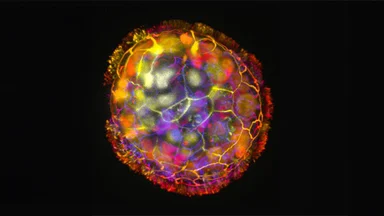Summary:
Researchers from Tufts University and the Wyss Institute at Harvard University have developed tiny biological robots, known as Anthrobots, capable of healing brain cells in a laboratory setting. These multicellular robots, ranging from hair-width to pencil-point size, were created using unaltered human tracheal cells. Unlike previous biobots called Xenobots, the Anthrobots were not individually sculpted from frog embryonic stem cells but rather grown organically from tracheal cells taken from adult donors.
The Anthrobots demonstrated autonomous movement, with various subtypes exhibiting different structures and patterns of motion. The researchers harnessed their regenerative potential by placing a group of Anthrobots, referred to as a «superbot,» onto a 2D layer of human neurons that had been wounded. Mimicking swarm intelligence, the superbot formed a cluster of mainly «wigglers» and «circlers,» strategically positioned around the wound to facilitate repair. Within 72 hours, the native neuronal tissue regrew to close the gap at the sites where superbots were placed, resembling a «mechanical stitch.» The researchers envision potential applications in regenerative medicine, arterial plaque removal, and the identification of bacteria and cancer cells. The unexpected ability of unaltered tracheal cells to encourage neuron growth without DNA modification has opened avenues for further exploration into the healing mechanisms of these constructs.
Article written by Helen Floersh
04/12/2023
Source:
Fierce Biotech
https://www.fiercebiotech.com/research/fascinating-and-completely-unexpected-biobots-grown-trachea-cells-heal-neuronal-tissue

